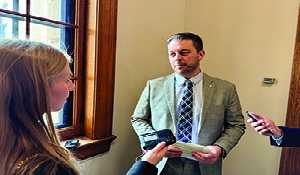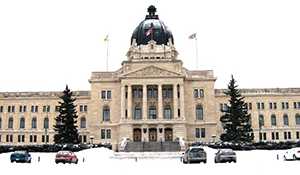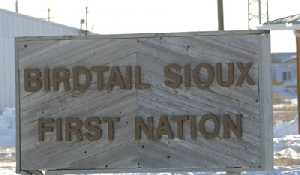Sask budget includes massive infrastructure spending
April 12, 2021, 4:14 pm
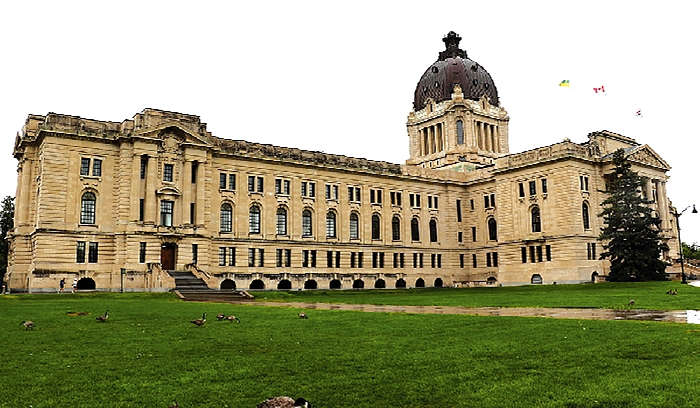

The 2021-22 provincial budget includes record spending on health care, education, and social services, including massive spending on infrastructure.
“This budget will protect Saskatchewan people through the pandemic, as more vaccines are received and life begins to return to normal,” Finance Minister Donna Harpauer said. “This budget will build Saskatchewan by investing in new long-term care facilities, hospitals, schools, highways and vital municipal infrastructure. And as our province and our economy emerges from the pandemic, this budget will grow Saskatchewan through incentives and key investments, while keeping life affordable for families.”
Harpauer said the Covid-19 pandemic is not only a global health crisis, it is also the biggest shock to the Saskatchewan, Canadian and world economies since the Second World War. “This is a significant challenge that requires a significant response,” Harpauer said. “As a result, this year’s deficit will be larger and it will take longer to return to balance than we had anticipated. But we are going to make the investments needed now to protect Saskatchewan people through the end of the pandemic and to drive a strong economic recovery as we emerge from the pandemic.”
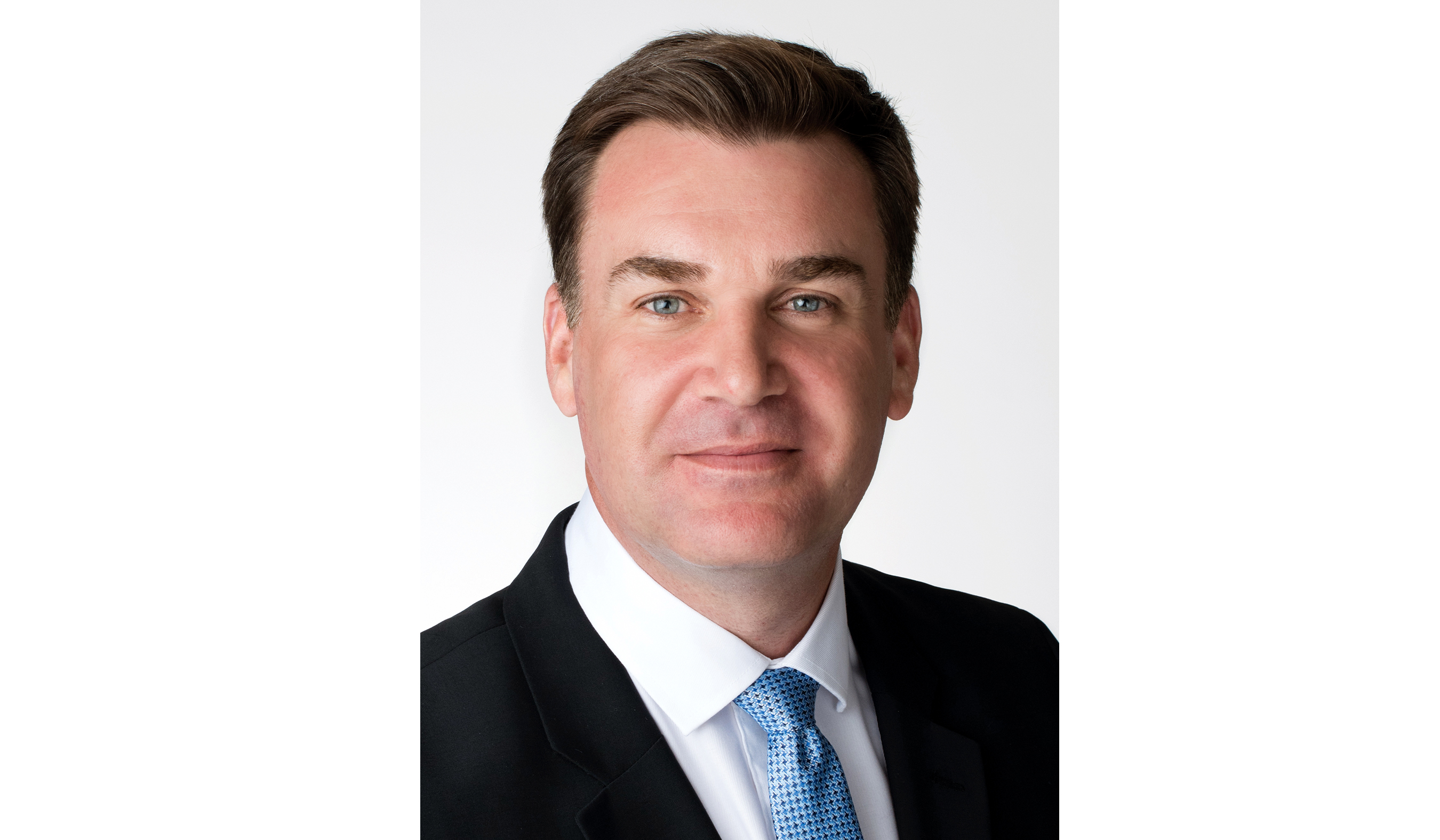

Moosomin MLA
Steven Bonk on the budget
Moosomin MLA Steven Bonk says he feels the budget’s biggest takeaway is its focus on protecting Saskatchewan people.
“The theme of the budget is protect, build and grow, and I think if you take a deep dive into the budget you will see that our government has taken a lot of pains to make sure we live up to those three words,” he said in an interview after the budget was released.
We’re really focused right now on the protection of our citizens and we’re rolling out probably the most robust and efficient vaccine rollout in Canada, and hopefully if the uptake remains good and people get vaccinated that is our way to get through this pandemic.”
He one of the biggest announcements for his constituents is the government’s funding of a new long-term care centre in Grenfell.
“For rural residents and Moosomin constituency in particular, I think one of the big highlights is funding for the long-term care centre in Grenfell. That is something that we’ve been pushing very hard for for quite a while to get up and going, and I’d like to thank Mayor Rod Wolfe and Tyler Tomlinson, particularly, in Grenfell—just their diligence and persistence and being just excellent partners in the fight to get the nursing home back.
“It’s extremely important. These are seniors who built this province and we’re doing everything we can to keep them at home as long as possible, and once they are going to a long-term care facility, we’d like to have them stay in their own communities. It’s the least we can do and it’s something our government is committed to.”
The budget includes a deficit of $2.6 billion, and Bonk says that’s due to Covid-19.
“Being a fiscal Conservative I’m always worried when we’re in a deficit. I think in this instance, I think Covid-19 has created the biggest shock to our economy since World War II.
“I think this is one of the rare instances where I do think that the government should increase some stimulus spending to get our economy back going and driving. I think it’s one of those times now where we have low interest rates, low infrastructure needs and it’s a good time to get Saskatchewan back to work. We do have a plan to get back to balance by 2026 and we will make sure we get there.”
He says it’s always tough to table a budget and Covid-19 has made it harder.
“An increase to taxes was never on the table for this budget because we thought at a time like this when the residents of Saskatchewan are quite often struggling due to the effects of Covid-19 on our economy, we didn’t think that a tax, a new tax or an increased tax would help very much so we tried to stay away from that. We tried to limit spending in areas where we could but of course increased spending in areas such as health and social services where some people are really suffering and need our help at the moment. We want to be a government that’s there for everyone, and for education of course as well.”
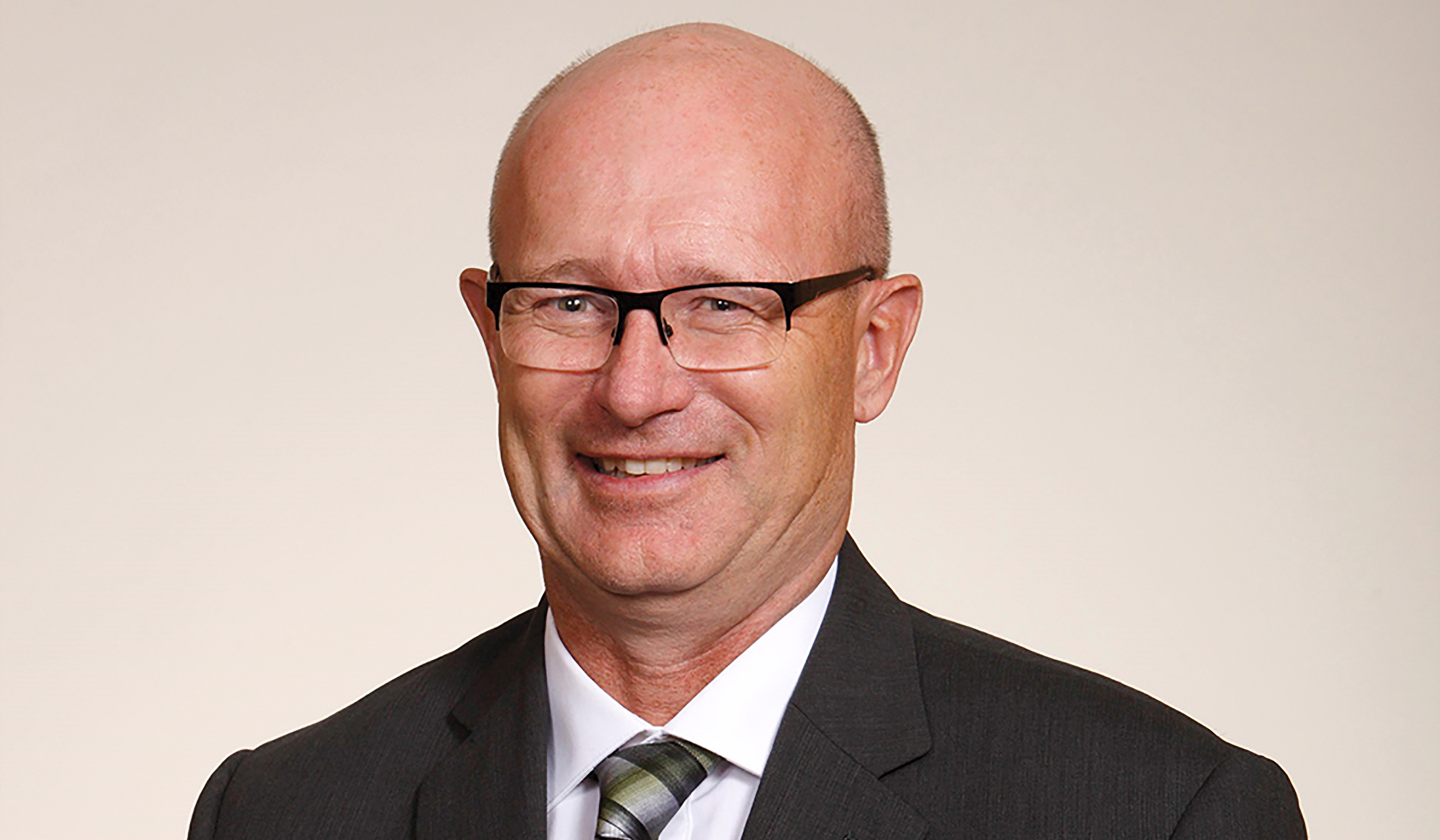

Melville-Saltcoats
MLA Warren Kaeding on the budget
Melville-Saltcoats MLA and Minister of Environment Warren Kaeding says Covid-19 has set the province back and now it’s time to focus on growth.
“We’ve certainly made sure that we’ve provided a certain amount of funding for protecting our citizens,” he says. “Knowing that we’re going to have to build and build better after Covid-19 has kind of set us back. We just certainly have to make sure that we are growing our workforce, we’re growing our value added sector, we’re growing the oil and gas sector, we’re just growing all the sectors that have been with us so far and maybe even build a couple of new sectors that are just on the cusp of developing now.”
There is additional funding for conservation officers in the budget.
“We’ve been provided $450,000 and that is going to go towards hiring more conservation officers,” says Kaeding. “So, with our rural crime protection branch, the PRT (Protection and Response Team) group, they have also had access to our conservation officers so our conservation officers aren’t just dealing with wildlife and wildlife management issues now. They could also be helping the RCMP on calls out to a community, on calls out to a situation, to a First Nation or elsewhere. So our COs now are involved more than they have ever been in reducing crime all through rural Saskatchewan.”
As part of the budget, the Ministry of Environment will be directing $629,000 to the Nuclear Secretariat to aid development of SMR (small modular reactor) technology and deployment in the province.
“We’ve got a feasibility study that I believe the premier will be unveiling here in probably a week’s time,” says Kaeding. “That was done in conjunction with Ontario, New Brunswick, with their power authorities there, and in that analysis, it’s a breakdown of what the small modular that nuclear reactor business would mean to those three jurisdictions—in upstream, downstream contributions to GDP, what it would mean for energy supply, ultimately how much would that reduce emissions. It’s a fairly comprehensive analysis of what that small reactor business would mean to each jurisdiction.
“We are anxiously awaiting the opportunity to release that and have everybody look at it but I think you’ll find it will make a significant contribution to Saskatchewan in a number of ways just in its emissions reductions. It will be a great asset that SaskPower will be able to utilize in its zero emissions profile and we’re one of the world’s greatest resources for uranium right now. So what better way to utilize that but locally.
“Every time the carbon tax goes up SaskPower has to reanalyze what their future is going to be and how they are going to be delivering energy into the future. So they’re still assessing carbon capturing utilization, will that continue to fit in what they’re doing? Do they need to add on and enhance in other units? Those decisions haven’t been made yet, so there’s a lot of decisions that SaskPower has to make, but having the nuclear secretariat here and building capacity in the province certainly bodes well for having a very robust nuclear industry in the province.”
A new fund of $200,000 will also be established to better support Indigenous participation in a range of ministry engagement initiatives. The fund will increase opportunities for Indigenous clients to participate in the development of policy and program options.
“A lot of the resource development is in areas that are being looked after by our Indigenous communities, so how can they best participate in some of that resource development,” says Kaeding. “Certainly we’re seeing a very active role of First Nations involved in power generation. Especially in the clean energy side, the green energy side. So can we strengthen our relationships and help build capacity within First Nations in those areas? Yes, ultimately, we are looking at how they can better fit into our 2030 growth plan.”
What does Kaeding feel is most important in this budget for his constituents in the Melville-Saltcoats riding?
“I’d say it’s just a very continuous funding and the priorities that we’re spending on—certainly on the big three—health, education and social services—that it’s consistent funding. There are no cuts, no increase in taxes in those areas, there’s a slight increase in the education property tax which I think was somewhat expected because it has been fairly flat for a number of years now. We’re certainly spending a lot of effort on rural connectivity, certainly making sure we’ve got cell phone towers in places that have maybe been under served in the past. For highways we’ve got the passing lanes that are now going to be built on Highway 16. We’ve had passing lanes built on Highway 9 and 10, which has been a significant benefit. So now kind of the northern half of the constituency is going to see it on Highway 16.
“I’d say it’s just a continuous support of all of the ministries that are responsible to the constituents of Melville-Saltcoats.”
Despite the evolving situation with Covid-19, Kaeding says the numbers in this budget should be fairly solid in the months to come.
“If you look at the resource side, the revenue side, everything seems to be pretty solid there I think,” he says. “Interest rates are still projected to be quite low. The expenditure side, we have long term agreements with all our collective bargaining units now so that helps provide continuity on the labour side of things. So I’d say we feel pretty comfortable with our projections, all things considered and still taking Covid-19 into account. But we are certainly hoping that things start to rebound and as we start getting more vaccines in arms we are able to get some of the temporary restrictions off, and we start getting back to what we’re used to.”
$26 billion deficit
The 2021-22 Budget includes a deficit of $2.6 billion. The province’s fiscal situation is projected to steadily improve over the next three years with smaller deficits of $1.7 billion in 2022-23, $1.2 billion in 2023-24, and $770 million in 2024-25.
A return to balance is expected in 2026-27. Saskatchewan’s real GDP is forecast to grow 3.4 per cent in 2021, but that follows a projected 4.2 per cent contraction in 2020.
“While Saskatchewan’s economy has fared better than most through the global health crisis, with continuing high levels of employment, the pandemic has still had a significant impact on the province’s economy and finances,” Harpauer said. “Our government has set a course to meet the fiscal challenge. We will manage carefully—without reckless cuts or large tax increases that would threaten both the pandemic response and a strong recovery.”
Revenue is forecast at $14.5 billion in 2021-22, with most revenue categories forecast to increase compared to the latest 2020-21 forecast. Expense of $17.1 billion is projected, an increase of $1.0 billion compared to last year’s budget.
Record health budget
This year’s record health budget of $6.54 billion—up $359 million or 5.8 per cent from last year—will strengthen the provincial health care system to protect families and communities. A $90 million increase in this budget will support Saskatchewan’s comprehensive Covid response. This includes:
• the mass vaccination rollout;
• purchase of more personal protective equipment;
• supporting contact tracing measures;
• expansion of testing and assessment sites;
• additional provincial laboratory capacity;
• supports for long-term care; and
• and coverage of added physician costs.
The 2021-22 Budget provides the Saskatchewan Health Authority with a $3.96 billion grant this year, up more than $221 million, or nearly six per cent, compared to last year.
The budget includes a record $458 million for mental health and addictions programs and services, up $23.4 million or 5.4 per cent from last year. This includes $7.2 million for targeted mental health and addictions services including specific youth-focused initiatives, investments in suicide prevention, and expansion of harm reduction and addictions treatment.
The 2021-22 Budget will spend $6.0 million to hire approximately 100 continuing care aides who will help long-term care clients with personal care, meals and medication.
“It’s the first year of our three-year, $18.4 million campaign commitment to hire 300 continuing care aides to work in long-term care and in existing and expanded home-care services in rural and remote areas,” Harpauer said.
“This budget also keeps our election commitment to support children with Autism and their families, with $6.0 million to expand the Autism Spectrum Disorder program to provide individualized funding for children ages six to 11. We are fulfilling another platform commitment through a $5.0 million increase to expand eligibility under the Saskatchewan Insulin Pump Program—which means the cost of an insulin pump will now be covered for everyone in Saskatchewan who needs one.”
The funding will also cover continuous glucose monitoring for children and youth under age 18. A $6.7 million increase will reduce ambulance fees for seniors to $135 per trip, down from $275—meeting another election commitment by the government. Emergency Medical Services will receive a $6.6 million increase to provide for additional ambulances in Regina and Saskatoon and address delays when transferring patients, along with other improvements. The 2021-22 Budget invests $1.4 million to add a new STARS helicopter to deliver emergency care faster to rural and remote areas and save lives. Total provincial funding for STARS is now $11.88 million.
Record education budget
Education spending across government is $3.75 billion in the 2021-22 Budget, up more than $391 million, or 11.6 per cent compared to last year.
This includes spending on pre-K to Grade 12 education, post-secondary education, and career training programs and commissions. Saskatchewan’s 27 school divisions will receive $1.96 billion in operating funding for the 2021-22 school year, a $19.2 million increase.
This includes fully funding the two per cent salary increase in the teachers’ collective bargaining agreement.
Federal-provincial Safe Schools funding of $155 million has been provided over the last year to help school divisions and independent schools during the pandemic.
More than $20 million of this funding will carry over into the 2021-22 school year, with $134.2 million allocated in 2020-21.
An increase of $2.0 million in this budget brings child care funding up to $75.5 million and will create 176 additional licensed home-based spaces and 51 new licensed centre spaces.
“This is part of our government’s four-year platform commitment to provide 750 new licensed childcare spaces,” Harpauer said. This year’s budget will invest a total of $735 million in the post-secondary sector in 2021-22. Beyond the typical base budget, government will invest an additional $60 million over two years—in 2021-22 and 2022-23—to be utilized for Covid recovery, revenue generation, and achieving priorities set out in the Growth Plan. “For the first time, Saskatchewan is providing a multi-year funding commitment to the post-secondary sector, which was developed collaboratively and is focused on shared priorities,” Harpauer said.
The 2021-22 Budget includes $678.5 million for post-secondary institutions, up 4.4 per cent compared to the previous year, as well as $39.8 million for student supports, a 10 per cent increase. This includes an increase in the Saskatchewan Advantage Scholarship from $500 to $750 annually per eligible student to help with tuition costs, fulfilling another campaign commitment by the government.
Record social services budget
The 2021-22 Budget provides social services and assistance with $1.56 billion, up more than $66 million, or 4.5 per cent, compared to last year.
“This budget meets our election commitment to increase benefits to seniors with $3.5 million in additional funding for the Seniors Income Plan,” Harpauer said. “The investment will help low-income seniors enjoy a better quality of life with maximum payments increasing by $30 a month effective July 1. This is the sixth increase our government has made to the Seniors Income Plan since 2008, after it had been frozen for 16 years by the previous government.”
The 2021-22 Budget also provides $246,000 to meet the government’s campaign commitment to further enhance communication services provided by the Canadian National Institute for the Blind and Saskatchewan Deaf and Hard of Hearing Services.
Protection of people and property
This year’s budget provides more than $845 million for the protection of Saskatchewan people and property, up $38.6 million, or 4.8 per cent, compared to last year.
This includes $92.4 million for the Saskatchewan Public Safety Agency, which is committed to the protection of people, property and resources across the province. The agency is coordinating the province’s non-health Covid response through its Provincial Emergency Operations Centre.
Capital spending
The 2021-22 Budget provides $3.1 billion of planned capital spending to stimulate the economy and create jobs. It invests $162 million in health care capital, including $7.6 million for the 80-bed La Ronge long-term care facility and $3.6 million for the future Grenfell long-term care facility.
The 2021-22 Budget provides $5.7 million for Urgent Care Centres in Regina and Saskatoon, $1.4 million for Weyburn Hospital planning, and $1.4 million for ongoing work on the program and design plans for Prince Albert’s Victoria Hospital. The 2021-22 Budget also invests $830 million into operating, maintaining, building and improving Saskatchewan’s roads and highways—up $115 million, or 16 per cent, compared to last year.
This year’s budget also provides nearly $190 million for education capital, up $22.3 million or more than 13 per cent compared to last year. This includes nearly $102 million to support 21 ongoing capital projects which will build 16 new schools and renovate five more.
The 2021-22 Budget invests more than $324 million in government services infrastructure, up more than $109 million compared to last year. This includes $52 million for the construction of the remand centre at the Saskatoon Correctional Centre.
There is also $70.1 million in the 2021-22 Budget for maintenance and upgrades to dams and canals, and $18.9 million for phase one of the Lake Diefenbaker Irrigation Expansion Project—a transformational multi-year project expected to cost $4.0 billion.
The 2021-22 Budget includes nearly $245 million for municipal infrastructure. Saskatchewan’s Crown corporations will spend $1.6 billion on major capital projects this year, including nearly $938 million by SaskPower to improve the province’s electricity system to meet demand and maintain reliability.
Growth Plan
“As Saskatchewan emerges from the pandemic, our government remains committed to the Growth Plan goals of a strong economy, a growing province and new jobs over the next decade,” Harpauer said.
The 2021-22 Budget includes record funding for workforce development of more than $39 million to strengthen Saskatchewan’s recovery from the pandemic.
Nearly $18 million is being provided for Employment Assistance for Persons with Disabilities, to remove barriers, provide supports and develop the skills people need to fully participate in the labour force.
This year’s budget takes additional measures to attract investment and create jobs in the oil sector by modernizing and expanding the High Water-Cut Program—changing the royalty status to make high water volume wells more viable and promote increased production.
To ensure the growth of export markets, the 2021-22 Budget increases funding for international trade offices by $5.0 million to $9.3 million. Four new trade offices will be added this year, complementing Saskatchewan’s existing offices in India, Japan, Singapore and China. The 2021-22 Budget includes nearly $175 million to fulfill another campaign commitment by the government to provide all SaskPower customers with a 10 per cent rebate on their power bills this year. In May, every Saskatchewan driver will receive a rebate on their vehicle registrations from the Auto Fund.
“On average, rebates will be about $285 per vehicle, putting $285 million back into the pockets of Saskatchewan residents,” Harpauer said. “With these rebates, Saskatchewan people will pay the lowest total utility rates in Canada this year—making life more affordable and strengthening our province’s economic recovery.”
The 2021-22 Budget extends the Saskatchewan Technology Start-up Incentive for five years, to encourage investment in technology, bring new products to market, and create jobs. The program offers a non-refundable 45 per cent tax credit to Saskatchewan investors.
To date, the incentive has attracted $22 million in investment, benefiting 62 technology companies and creating 144 new jobs.
This year’s budget also fulfills the government’s campaign commitment to reinstate the Community Rink Affordability Grant, providing $2,500 per ice surface.
Total funding through the Saskatchewan Veteran Service Club Support Program will grow from $100,000 to $1.5 million this year.
And this budget restarts the Active Families Benefit, helping to keep life affordable for families by providing $150 per child enrolled in sport, recreation and cultural activities. Both of these initiatives were also campaign commitments by the government. “In the election campaign last fall, we made 14 specific campaign commitments to make life more affordable for Saskatchewan people,” Harpauer said. “This budget fulfills all 14 of these commitments. We did what we said we would do.”
Tax changes
The 2021-22 Budget includes a number of changes, including taxation of vape products and heat-not-burn tobacco products, as well as a road use fee for electric vehicles at the time of registration to ensure that all road users contribute to road maintenance and replacement.
Debt
Total public debt, including Crown corporation debt, is projected to be $27.8 billion at March 31, 2022—up $4.2 billion compared to last year.
Borrowing in Budget 2021-22 will be for operations and new capital investment to build hospitals, schools, highways, and municipal and Crown infrastructure. Saskatchewan’s net debt-to-GDP ratio will remain among the lowest in Canada.
“Throughout this pandemic, we have witnessed Saskatchewan’s resolve, as our people made the sacrifices required to protect not only themselves, but also their families, friends, neighbours and co-workers,” Harpauer said.
“When this pandemic is over we will witness Saskatchewan’s resilience, as our economy recovers and grows, as businesses reopen and more people return to work, and as Saskatchewan recovers to be even stronger than before.
“This budget protects, builds and grows Saskatchewan. It charts a clear course for our province through the pandemic and into the strong recovery that will follow.” Tweet

































